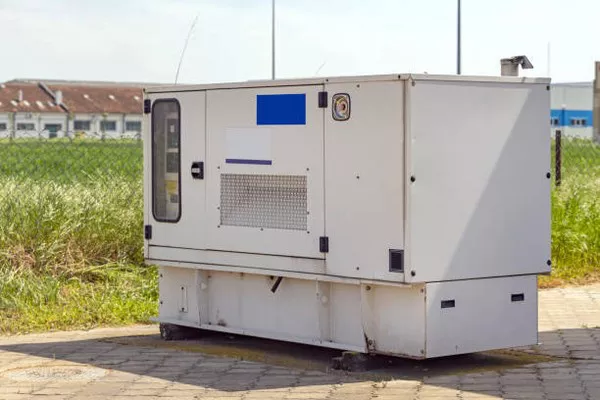In today’s world, generators play a crucial role in providing backup power during outages and enabling off-grid living. Understanding what a specific generator can power is essential for making informed decisions when purchasing one. This article delves into the capabilities of a 2.8 kW generator, exploring what appliances and tools it can run, considerations for usage, and tips for optimizing its performance.
Understanding Generator Ratings
What Does 2.8 kW Mean?
A 2.8 kW generator can produce 2,800 watts of continuous power. This rating indicates the maximum load it can handle when operating continuously. Generators also have a starting wattage rating, which is higher than the running wattage to account for appliances that require more power to start.
Surge vs. Running Watts
Surge Watts: This is the initial burst of power needed to start certain appliances, especially those with motors.
Running Watts: This is the continuous power needed to keep appliances operating after they have started.
Understanding these terms is vital for determining what a 2.8 kW generator can effectively power.
Appliances and Tools a 2.8 kW Generator Can Run
Home Appliances
Refrigerator: Most modern refrigerators require between 100 to 800 watts to run, making them feasible for a 2.8 kW generator.
Microwave Oven: A typical microwave draws about 600 to 1,200 watts. While it can run on a 2.8 kW generator, consider using it sparingly alongside other appliances.
Television: Depending on the size and type, televisions typically consume between 50 to 400 watts.
Lights: Standard LED light bulbs use about 10 to 20 watts each, allowing multiple lights to run simultaneously.
Heating and Cooling
Fans: Ceiling or portable fans usually require about 70 to 100 watts, making them easy to run on a 2.8 kW generator.
Space Heaters: Small electric space heaters may consume up to 1,500 watts. While a 2.8 kW generator can start one, it may limit the use of other devices simultaneously.
Power Tools
Drills: Cordless drills typically draw around 300 watts, making them suitable for use with a 2.8 kW generator.
Saws: Tools like circular saws may require between 1,200 to 1,800 watts, so consider the generator’s load capacity when using them.
Additional Devices
Charging Devices: Laptops and smartphones generally draw very little power (around 50 to 100 watts), making them easily manageable.
Small Appliances: Devices like toasters or coffee makers typically consume between 800 to 1,200 watts, so be cautious when using them with other high-draw appliances.
Calculating Total Wattage
How to Calculate Your Needs
To determine whether a 2.8 kW generator can meet your power needs, sum the wattage of all devices you plan to run. Use the following formula:
Total Wattage=Appliance 1 Wattage+Appliance 2 Wattage+…
Example Calculation
Imagine you want to power the following:
Refrigerator: 600 watts
Microwave: 800 watts
LED Lights: 200 watts (10 bulbs at 20 watts each)
Laptop: 100 watts
Total Wattage = 600 + 800 + 200 + 100 = 1,700 watts
In this case, a 2.8 kW generator can easily handle this load.
Considerations for Using a 2.8 kW Generator
Power Management
Load Management: Avoid running multiple high-wattage devices simultaneously to prevent overloading the generator.
Stagger Usage: Use devices one at a time, especially those with high starting wattages.
Fuel Type
Gasoline: Common for portable generators; however, it has a limited shelf life and requires careful handling.
Propane: Cleaner burning and has a longer shelf life than gasoline, but the generator must be compatible.
Diesel: Offers better fuel efficiency and longer run times, but diesel generators are often heavier and less portable.
Maintenance
Regular Checks: Perform regular maintenance checks, including oil changes, air filter cleaning, and spark plug inspections.
Fuel Quality: Use fresh fuel and store it properly to prevent issues.
Tips for Optimizing Generator Use
Positioning
Ventilation: Ensure the generator is placed in a well-ventilated area to prevent carbon monoxide buildup.
Level Ground: Set the generator on stable, level ground to ensure proper operation.
Extension Cords
Use Heavy-Duty Cords: Opt for extension cords rated for the wattage you plan to draw, minimizing the risk of overheating.
Avoid Daisy Chaining: Plugging multiple extension cords together can lead to voltage drops and potential hazards.
Real-Life Applications and Testimonials
Home Backup
Many homeowners have found that a 2.8 kW generator is perfect for providing essential power during outages, keeping refrigerators running and lights on without overwhelming their power needs.
Job Sites
Contractors often use portable generators to power tools at job sites, allowing them to work efficiently in remote locations.
Camping and Outdoor Activities
Outdoor enthusiasts appreciate the convenience of a 2.8 kW generator for camping trips, as it can power small appliances and charge devices.
Conclusion
A 2.8 kW generator is a versatile and practical choice for various applications, from home backup during power outages to powering tools on job sites and enhancing outdoor experiences. By understanding its capabilities and limitations, you can make informed decisions about what appliances and tools to run, ensuring you maximize its utility and efficiency. Whether you’re preparing for an emergency or enhancing your outdoor adventures, a 2.8 kW generator can provide the reliable power you need.
Related topics:

